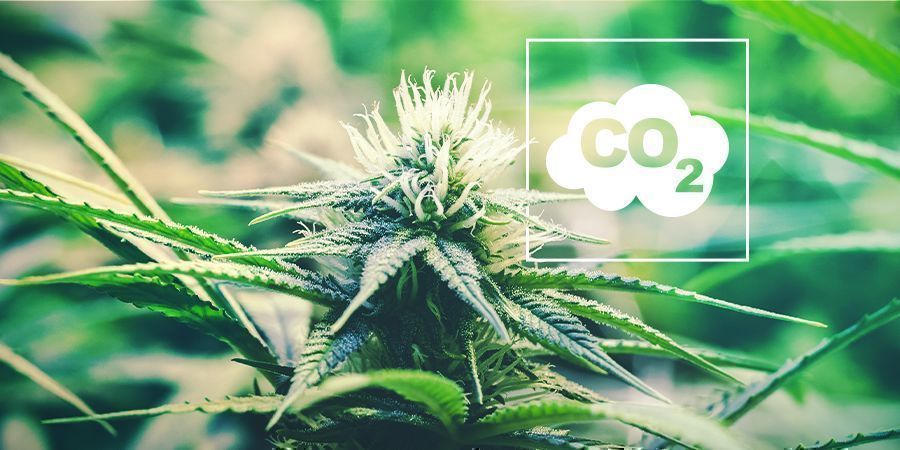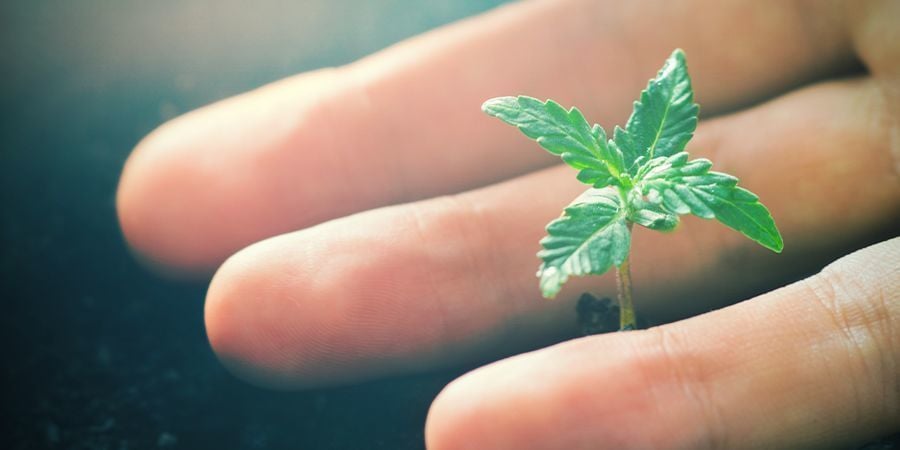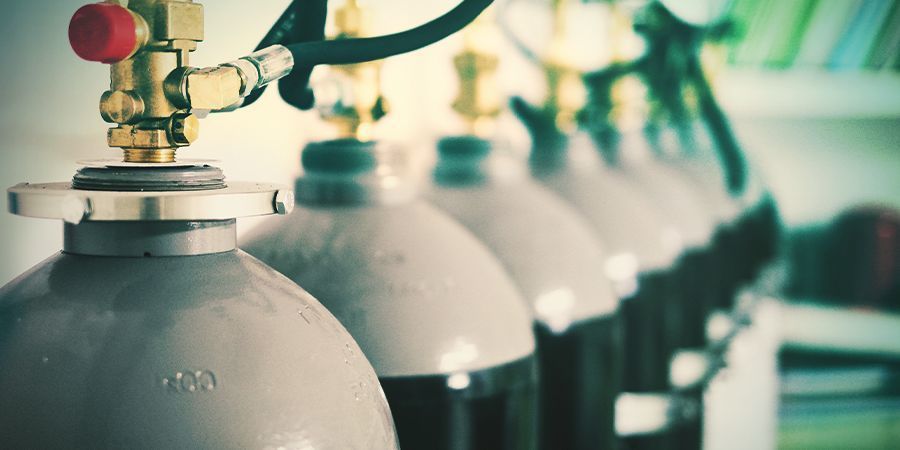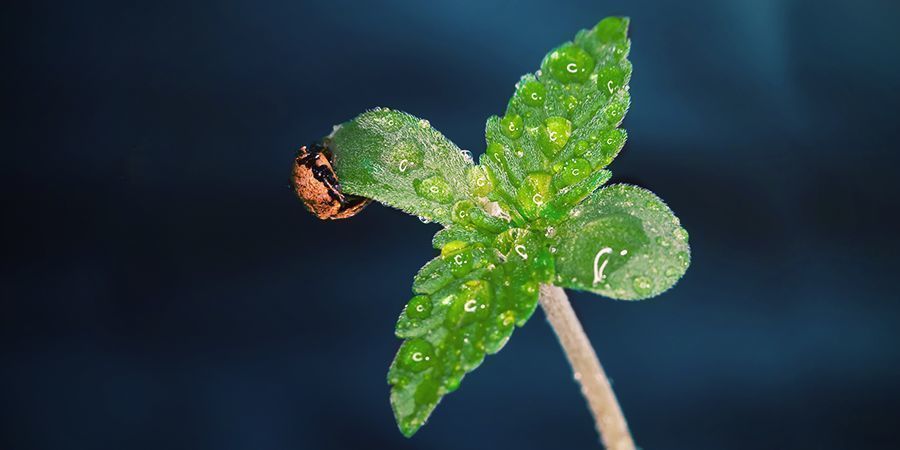Effects Of CO₂ On Cannabis Plants

To boost your yields, you can supply your cannabis plants with supplementary CO₂. Discover the effect CO₂ has on your plants, and learn when and how to use it in your grow room.
Did you know that perhaps the least hands-on way to dramatically increase cannabis yields is with gas? Marijuana like other plants produces oxygen during photosynthesis. They actually need CO₂ to fuel the whole process. Adding the optimal CO₂ ppm to the air in the grow op is a proven method to boost bud production. By the end of this guide, you too will have the know how to crop a heavier weed harvest by adding CO₂.
WHAT IS CO₂?
CO₂ has attracted a lot of bad press and quack-science in recent years. Since CO₂ gas was identified as planetary enemy number one in the 1990’s. It has been dismissed as a poisonous greenhouse gas and nothing more. Of course, climate change is real and pollution is the likely cause.
However, it is also a fact that the Earth was once a very different place before man’s arrival. Plants have been on Earth far, far longer than us. They positively thrived when the atmosphere was rich with CO₂ millions of years ago. In comparison, plants today are CO₂ starved.
POSITIVE EFFECTS OF CO₂ ON CANNABIS PLANTS

Similar to how humans require oxygen, cannabis plants need CO₂. While we exhale CO₂, they release oxygen and only consume it when not photosynthesising. The obvious solution to our climate challenge is: plants! Cannabis plants make wonderful use of CO₂, developing fat colas and pumped up buds. For marijuana, CO₂ is a resource. Provide it in abundance and they will thank you for it come harvest.
Increasing CO₂ to optimal levels for cannabis plants is a great high-yield cropping alternative. Typical pruning and training techniques can be high maintenance. Most hands-on high-yield methods require a prolonged vegetative growth phase. This costs the grower time and increases fixed cultivation costs like electricity and nutrients. Using CO₂ not only bulks up yields it speeds up development for faster cannabis cropping.
Another benefit of a CO₂-rich grow op is that cannabis plants can tolerate slightly hotter temps. Instead of religious dedication to ensuring temps never exceed 28°C with the right CO₂ ppm marijuana can still thrive in the 28-33°C temperature range. In fact, weed prefers slightly higher temps in a CO₂ rich environment. This summer, indoor growers should consider a CO₂ tank and not just air-con.
HOW TO GENERATE EXTRA AMOUNTS OF CO₂?

Until recently the only way to generate extra quantities of CO₂ required costly investment in a reliable CO₂ system. Heavy tanks of CO₂, hoses, regulators, timers and controllers are no longer necessary. Unless you’re a commercial cannabis farmer.
For the contemporary home grower that probably sleeps in the bedroom next door to the grow op it’s can be hazardous to play with advanced CO₂ kits. The optimal ppm or parts per million of CO₂ in air for cannabis is somewhere between 1,500-2,000ppm depending on the strain. In your home, the level is probably around 300ppm.
To precisely dial in the optimal level you need the expensive toys. And to do some calculations. Plus, CO₂ tanks will need frequent replacement, even if you purchase the huge 10kg kind. Dropping a couple of grand on CO₂ enrichment is not an option for the average grower.
The easy way to fertilise with CO₂ is with some cheap CO₂ tabs that can be dissolved in water. Simply feed to plants roots like regular nutrients. Most online grow stores are stocking these tabs. CO₂ tabs are readily available for less than €20. Just make sure to feed them CO₂ water at lights on indoors as roots will not absorb the CO₂ in the dark.
Another inexpensive alternative that is really effective is a CO₂ bag for the grow op. The bag comes ready to go. Just sit it in the corner of the grow tent like a sack of potatoes. Each bag is good for about a half dozen plants and will last around 6 months. A CO₂ bag will set you back no more than €50 from most reputable grow shops.
WHAT IS A CARBON FILTER AND HOW TO USE IT
A carbon filter combined with a high-quality extractor fan is the cannabis odour control system of choice around the world. The pungent aroma of marijuana may be enchanting to users but it can also draw unwelcome attention. Air filtration is a necessity.
In ordinary decent stoner terms, a carbon filter is a metal tube housing activated charcoal pellets. Air is drawn through with an exhaust fan. As the air passes through the screened off treated carbon lining the smell is neutralised. The process of chemical attraction applies here. The oxygenated porous charcoal will attract odours molecules to its carbon atoms. Thus eliminating the tell-tale reek of weed.
The exhaust must be connected to a vent with secure ducting, as must the connection between a carbon filter and an extractor fan. No sharp corners or bends in the ducting in so far as possible. Too many corners will reduce efficiency. So try to keep ducting straight and secured with duct tape. Most growers mount this equipment high up close to the ceiling of the grow tent. Cable ties and chains will be needed to keep everything fastened together securely.
Carbon filters don’t last forever. They need fresh charcoal every 3-6 months. Replacing the whole carbon filter can sometimes be cheaper. Often they can be picked up at discount rates from online grow shops. Just make sure you don’t run out during the bloom phase.
Most home growers can get away with a handful of unnoticed cannabis plants in vegetative growth. But flowering cannabis must have odour control. It’s really easy to tell when the filter stops working.The scent of Mary Jane will be in the air again.
WHEN TO USE CO₂ FOR CANNABIS PLANTS
Ideally, CO₂ enrichment should commence as early as possible while plants are still baby seedlings. However, the prohibitively high cost of advanced systems limits growers to adding CO₂ only during the bloom phase.
The modern low-cost alternatives described earlier can be introduced to the grow op from the start. Even if the levels don’t quite reach the 1,500-2,000ppm sweet spot, plants will be exposed throughout their lifecycle for longer.
TIME OF DAY
We have mentioned it a few times already but repetition is the father of learning so we’ll say it one last time. All plants, not just cannabis plants, fuel photosynthesis with CO₂. No light no CO₂ use.
The best time for plants to absorb CO₂ is within the first 2 hours of the light cycle during bloom. Cannabis then needs a further 6-8 hours to utilise it. Of course, you have a longer window of perhaps the first 4-6 hours during vegetative growth. Or, if cropping autoflowering varieties, apply the same schedule as vegetative growth throughout the grow.












 United States
United States












